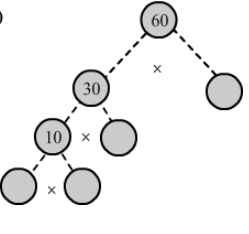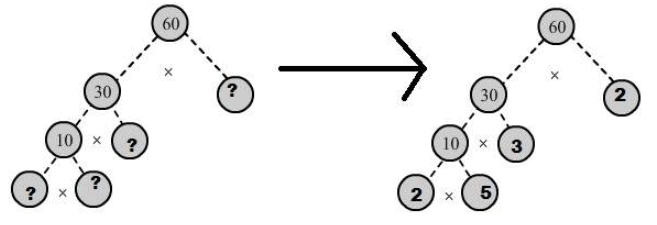Playing With Numbers (Exercise 2.4) RD Sharma Solutions | Mathematics for Class 6 PDF Download
Q.1. In which of the following expressions, prime factorization has been done?
(i) 24 = 2 × 3 × 4
(ii) 56 = 1 × 7 × 2 × 2 × 2
(iii) 70 = 2 × 5 × 7
(iv) 54 = 2 × 3 × 9
Ans:
(i) 24 = 2 × 3 × 4 is not a prime factorisation as 4 is not a prime number.
(ii) 56 = 1 × 7 × 2 × 2 × 2 is not a prime factorisation as 1 is not a prime number.
(iii) 70 = 2 × 5 × 7 is a prime factorisation as 2, 5, and 7 are prime numbers.
(iv) 54 = 2 × 3 × 9 is not a prime factorisation as 9 is not a prime number.
Q.2. Determine prime factorization of each of the following numbers:
(i) 216
(ii) 420
(iii) 468
(iv) 945
(v) 7325
(vi) 13915
Ans:
(i) 216
We have:

∴ Prime factorisation of 216 = 2 × 2 × 2 × 3 × 3 × 3
(ii) 420
We have:

∴ Prime factorisation of 420 = 2 × 2 × 3 × 5 × 7
(iii) 468
We have:

∴ Prime factorisation of 468 = 2 × 2 × 3 × 3 × 13
(iv) 945
We have:

∴ Prime factorisation of 945 = 3 × 3 × 3 × 5 × 7
(v) 7325
We have:

∴ Prime factorisation of 7325 = 5 × 5 × 293
(vi) 13915
We have:

∴ Prime factorisation of 13915 = 5 × 11 × 11 × 23
Q.3. Write the smallest 4-digit number and express it as a product of primes.
Ans: The smallest 4-digit number is 1000.
1000 = 2 × 500
= 2 × 2 × 250
= 2 × 2 × 2 × 125
= 2 × 2 × 2 × 5 × 25
= 2 × 2 × 2 × 5 × 5 × 5
∴ 1000 = 2 ×2 × 2 × 5 × 5 × 5
Q.4. Write the largest 4-digit number and give its prime factorization.
Ans: The largest 4-digit number is 9999.
We have:

Hence, the largest 4-digit number 9999 can be expressed in the form of its prime factors as 3 × 3 × 11 × 101.
Q.5. Find the prime factors of 1729. Arrange the factors in ascending order, and find the relation between two consecutive prime factors.
Ans: The given number is 1729.
We have:

Thus, the number 1729 can be expressed in the form of its prime factors as 7 ×13 ×19.
Relation between its two consecutive prime factors:
The consecutive prime factors of the given number are 7, 13, and 19.
Clearly, 13 − 7 = 6 and 19 − 13 = 6
Here, in two consecutive prime factors, the latter is 6 more than the previous one.
Q.6. Which factors are not included in the prime factorization of a composite number?
Ans: 1 and the number itself are not included in the prime factorisation of a composite number.
Example: 4 is a composite number.
Prime factorisation of 4 = 2 × 2
Q.7. Here are two different factor trees for 60. Write the missing numbers:
(i)

(ii)

Ans: (i) Since 6 = 2 × 3 and 10 = 5 × 2, we have:

(ii) Since 60 = 30 × 2, 30 = 10 × 3 and 10 = 5 × 2, we have:

|
53 videos|372 docs|23 tests
|





















